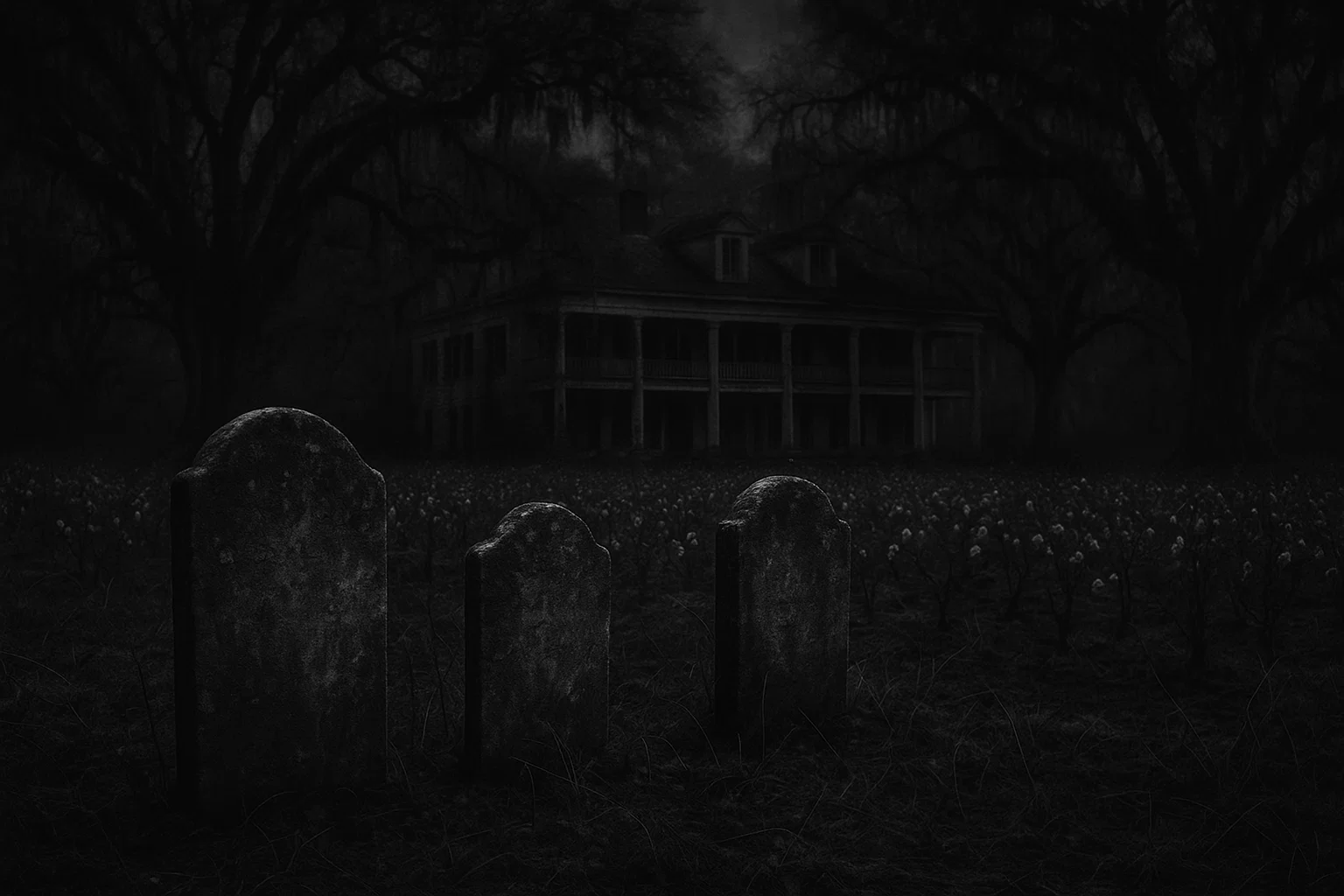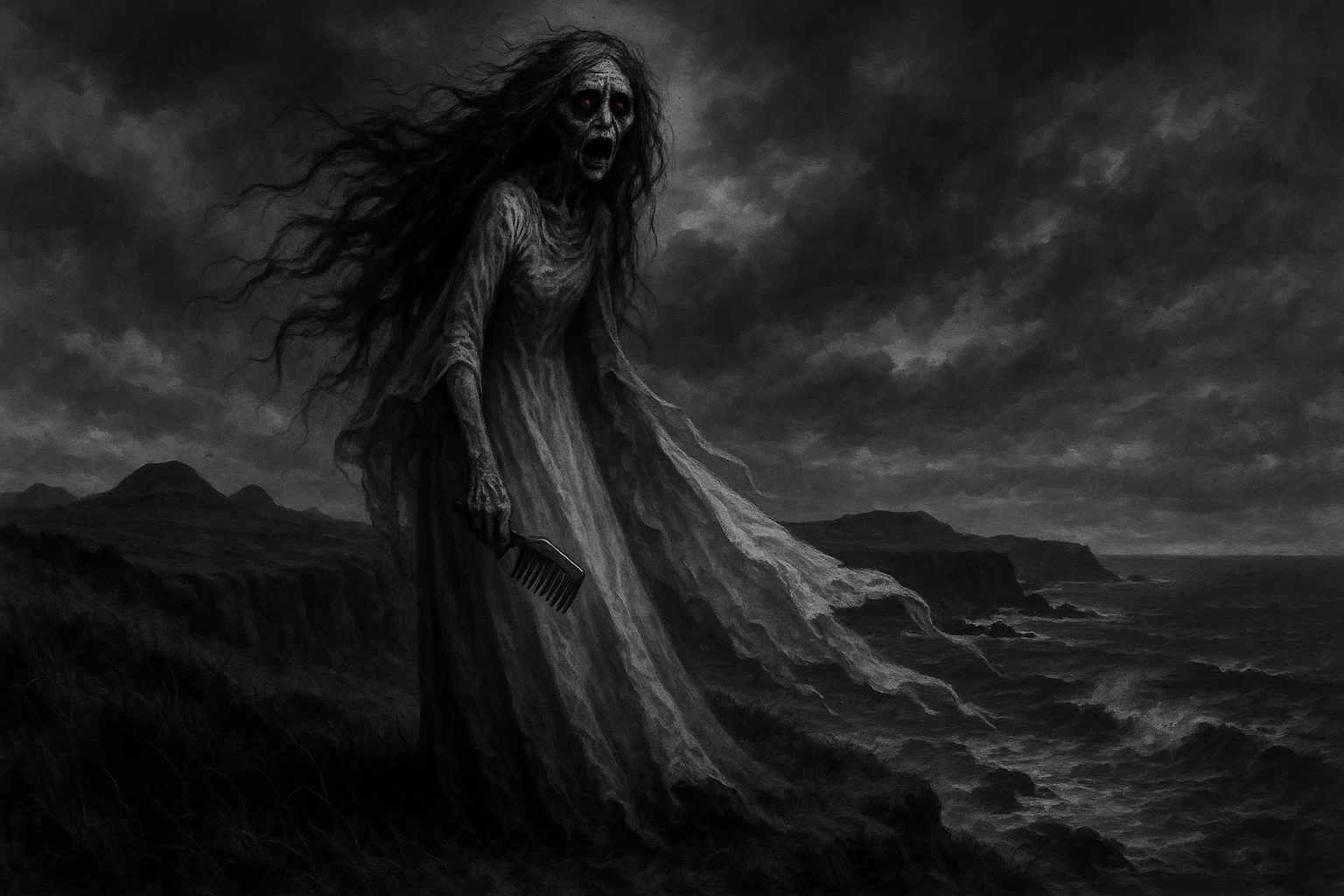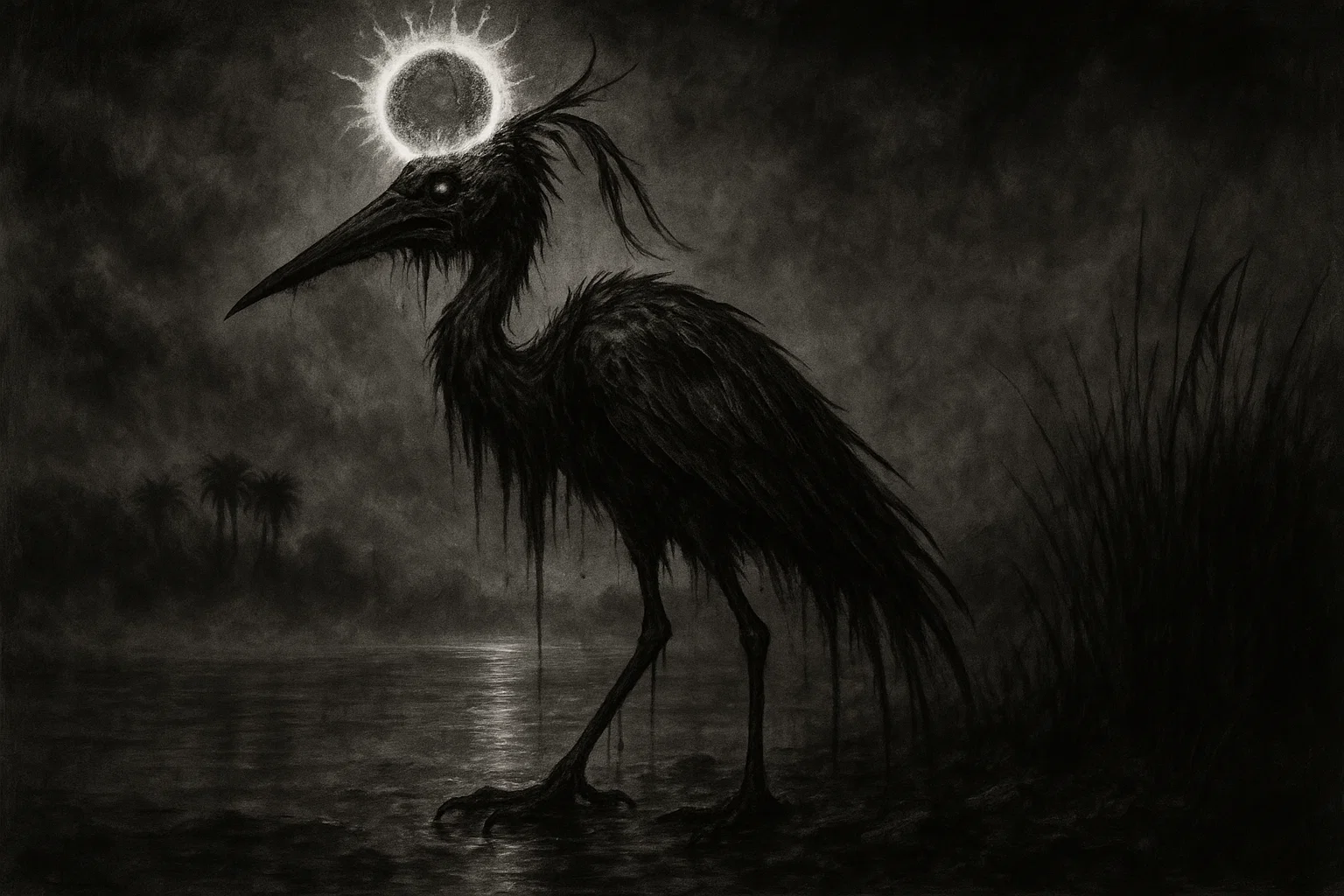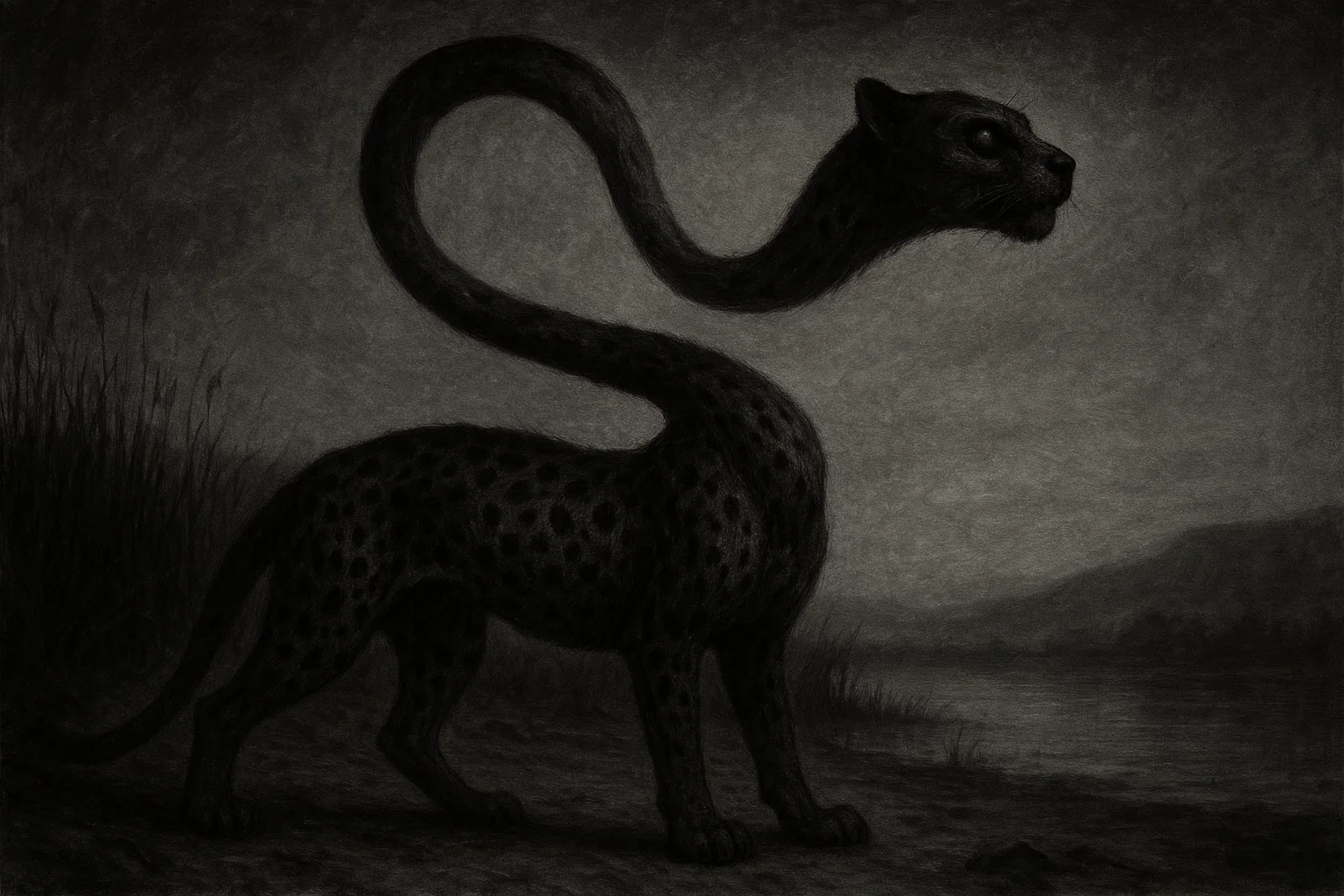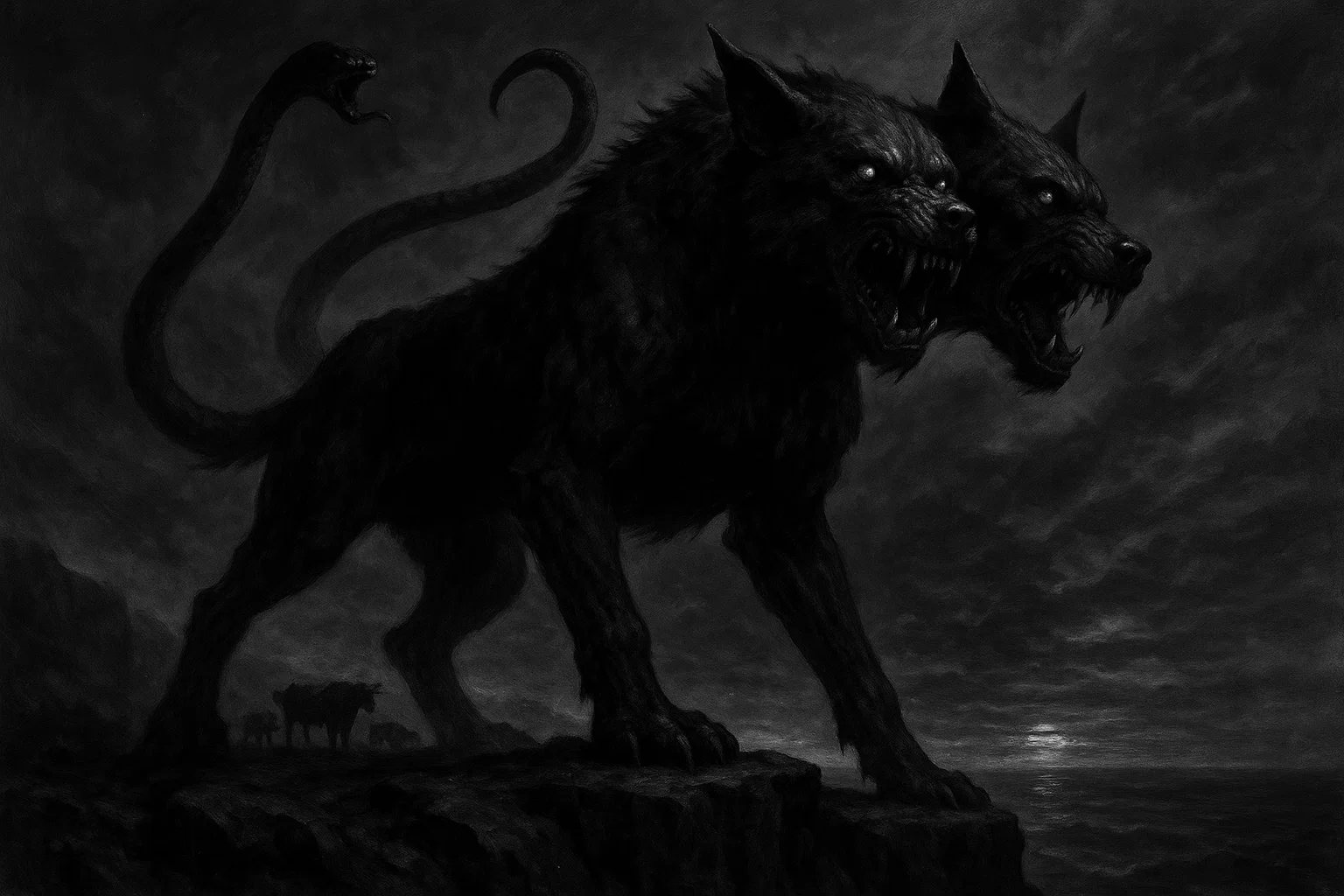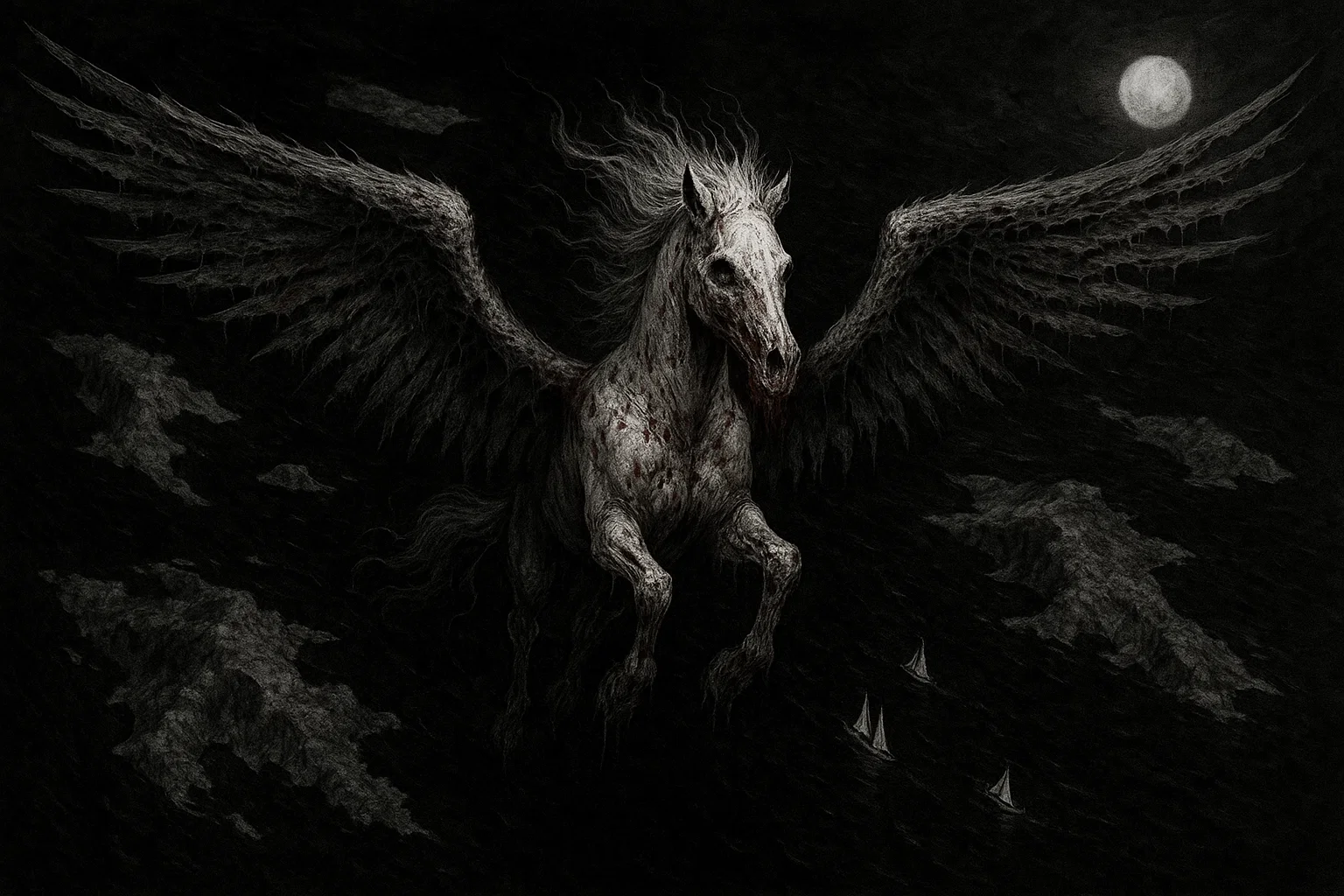The Myrtles Plantation is a beautiful antebellum mansion in St. Francisville, Louisiana, renowned for its architectural elegance and persistent reports of paranormal activity.
Built in 1796, this historic site served as a cotton plantation worked by enslaved individuals. It was later “rebranded” into a bed and breakfast, drawing visitors intrigued by its history of tragedy and alleged ghost encounters.
Legends of hauntings at the Myrtles Plantation include apparitions of former residents, unexplained sounds, and physical manifestations, often tied to events like yellow fever epidemics and isolated murders.
Despite debates over the veracity of specific tales, the property’s reputation is that of one of the most haunted locations in the United States endures.
Summary
Key Takeaways
| Attribute | Details |
|---|---|
| Name | Myrtles Plantation (also known as Laurel Grove in early records) |
| Location | 7747 U.S. Highway 61, St. Francisville, Louisiana 70775, United States |
| History | Tragic events include yellow fever deaths in the 1830s and 1840s, the 1871 murder of William Drew Winter, hangings of enslaved individuals, and multiple suicides during the 19th century |
| Type of haunting | Apparitions, Ghosts (General), Intelligent, Poltergeist |
| Entities | Chloe (enslaved woman), Cornelia Gale Woodruff, James Woodruff, Mary Octavia Woodruff, William Drew Winter, Sara Mathilda Woodruff, young girl in green turban, Native American woman, Confederate soldiers |
| Manifestations | Apparitions of figures in period clothing, children’s laughter and cries, footsteps on stairs, cold spots, objects moving or vanishing, handprints on mirrors, shadowy figures, odd smells of perfume or cigar smoke, scratches, and orbs in photographs |
| First reported sighting | *Early 1900s, with written accounts in the 1941 Federal Writers’ Project and 1948 book *Ghosts Along the Mississippi** |
| Recent activity | December 2024: A nurse captured a photograph allegedly showing the apparition of Kate Winter, a young girl who died in 1868, during a tour; the image depicted a translucent figure resembling historical portraits |
| Open to the public? | Yes; visitors can book daytime historical tours, evening mystery tours, or overnight stays at the bed and breakfast via the official website or by calling (225) 635-6277 |
What Is the Myrtles Plantation Haunting?
The Myrtles Plantation, an 18th-century estate in Louisiana, is famous for its stories of ghost encounters and paranormal manifestations. Many visitors and investigators report strange experiences (such as seeing apparitions or hearing unexplained noises).
These hauntings are often thought to be linked to the plantation’s troubled history, which includes disease, violence, and loss. This aligns with a common theme found in haunted plantations across the Southern United States, where the legacy of slavery and past hardships still seem to impact the present.
However, at Myrtles Plantation, the ghosts appear to interact with visitors in an intelligent manner (a form of intelligent haunting). Some people have reported feeling watched, hearing whispers in response to their questions, or noticing that objects move on their own.
There are also reports of poltergeist activity (such as furniture shifting or doors slamming). Many witnesses describe seeing figures, including a woman in a green turban, which may be connected to local legends.
You May Also Like: 15 True Ghost Stories You Shouldn’t Read Alone After Midnight
Myrtles Plantation Haunted History
The Myrtles Plantation has a rich and tragic history that dates back to 1796. It was started by General David Bradford, a man who had been part of the Whiskey Rebellion and was pardoned by President George Washington. He fled to what is now Louisiana and built a simple cottage on a 600-acre plot near the Mississippi River.
Bradford named the place Laurel Grove, but after he passed away in 1808, his son Thomas changed the name to Myrtles to honor the beautiful crepe myrtle trees growing on the property.
At this plantation, enslaved people worked hard to clear the land and grow indigo, before shifting to cotton, which made the Bradford family extremely wealthy.
However, the early years were marked by sadness (particularly after Bradford’s daughter, Sarah Mathilda, married wealthy merchant Ruffin Gray Stirling in 1820).
Years later, in 1834, Stirling bought the property and significantly expanded it. He added galleries and luxurious furnishings to make it a symbol of Southern wealth and refinement.
Nevertheless, success came with severe challenges. A yellow fever outbreak struck the area between 1830 and 1834, claiming the lives of Stirling’s young son and his mother-in-law. The slaves living on the plantation also faced horrific punishments, as some were allegedly executed for disobedience.
By the 1850s, crop failures and an economic crisis caused the plantation to struggle financially. Stirling died in 1851, leaving Sarah in debt.
After marrying lawyer Clark Woodruff in 1854, she faced more tragedy when three of Woodruff’s young children died from yellow fever in the early 1860s, with tiny graves marked in the family burial plot. Sarah herself succumbed to the disease in 1868.
Later, during the Civil War, Union soldiers took over the property, causing damage and reportedly disturbing graves. Still, there is no evidence of any mass killings.
After the war, the plantation continued to decline. In 1871, an attorney named William Drew Winter purchased the old mansion.
Tragically, he was shot shortly after confronting an intruder at the front door. He collapsed on the stairs, dying in his wife Viola’s arms. This is the only confirmed murder at Myrtles. Although five suspects were brought in for questioning, none were convicted, partly due to the racial tensions of the time.
The yellow fever outbreaks continued to plague the area, claiming more lives, including a young girl named Kate Winter. She was allegedly treated by a voodoo practitioner, but sadly did not survive.
The plantation was left abandoned for many years until 1891, when Harrison Milton Lea made an effort to restore it. However, many of the buildings were damaged by fires in 1927.
For much of the 20th century, the Myrtles was on the brink of ruin until it was bought in 1955 by Isabel and Lawrason Wood, who began the process of restoring and preserving the site.
Today, the Myrtles Plantation bears a haunting legacy. With tales of over ten unverified murders, lost souls, and the echoes of history, it is said to be haunted. The spirits of slaves, victims of disease, and tragic events seem to linger in the buildings, reminding us of the profound scars left by a very troubled past.
Myrtles Plantation Ghost Sightings
| Date | Witness(es) | Location in House/Grounds | Description of Sighting/Manifestation | Corroborating Evidence |
|---|---|---|---|---|
| Early 1900s (undated) | Plantation residents and early visitors | General interior and stairs | Footsteps ascending the staircase, stopping abruptly on the 17th step; apparitions of a staggering man in 19th-century attire | Oral histories documented in 1941 Federal Writers’ Project interviews; echoed in 1948 photolog Ghosts Along the Mississippi by Clarence Laughlin |
| 1948 | Clarence Laughlin (photographer) | Parlor mirror | Shadowy figures reflected in the foyer mirror, resembling Woodruff family members; handprints appearing on glass surface | Published in Ghosts Along the Mississippi; photograph shows unexplained smudges interpreted as claw marks |
| 1970s | Meyers family (owners) and overnight guests | Bedrooms and hallways | Transparent apparition of a young girl in a green turban wandering corridors; children’s laughter and cries at night; cold spots in specific rooms | Multiple guest logs; family accounts in local newspapers; no photographic evidence but consistent reports leading to tourism promotion |
| 1992 | Frances Kermeen (owner) | Grounds between buildings | Shadowy figure of a young girl in a bonnet captured in insurance photos; object displacement in nearby rooms | Circled anomaly in official photographs; featured in Kermeen’s 2000 book The Myrtles Plantation: The True Story of America’s Most Haunted House |
| 2002 | Unsolved Mysteries film crew | Staircase and children’s bedroom | EVP recordings of whispers and knocks; visual orb anomalies on video; sensation of being pushed on stairs | Televised episode; audio files analyzed by production team showing unexplained vocalizations |
| 2005 | Ghost Hunters team (TAPS) | Entire house, focusing on mirror and stairs | Temperature drops from 72°F to 58°F; EMF spikes near 17th step; fleeting apparition of a woman in a dress | Aired on Syfy; equipment logs and thermal imaging documented in episode recaps |
| 2013 | Tour groups and paranormal investigators | Foyer and grounds | Handprints reappearing on replacement mirrors; Native American woman apparition near alleged burial ground; cigar smoke odors without source | Brochure promotions by owners; visitor-submitted photos showing handprints; EVP sessions yielding responses like “leave” |
| December 2024 | Lancon family (tourists, including nurse Jamie Lancon) | Front porch area | Translucent figure of a young girl resembling Kate Winter, hovering above group in photograph; no physical presence noted at time | Digital photo enhanced to reveal facial features matching historical portraits; shared on social media and local news outlets |
1948 Mirror Apparition
In 1948, photographer Clarence Laughlin visited the run-down Myrtles Plantation as part of his project on Southern decay. While taking pictures inside, he aimed his camera at an old mirror that had been brought over from Europe in the 1830s.
To his surprise, he noticed faint reflections that didn’t match the empty room: he saw the outline of a woman’s face and small hands pressing against the glass.
Laughlin described the eerie experience as feeling “like a breath from the grave,” especially since the mirror had fogged up for no clear reason, despite being a dry autumn day.
When he developed the photos, he noticed strange marks on the prints that resembled claw-like scratches, as if trapped souls were trying to break free.
This peculiar phenomenon is linked to the Woodruff family, who lived there; Sarah Mathilda Woodruff, who died in 1868, followed a custom of covering mirrors during funerals to prevent spirits from lingering.
However, this particular mirror was not covered. Laughlin later published these findings in a book called “Ghosts Along the Mississippi,” which brought attention to the ghostly stories surrounding the plantation.
According to local lore, the mirror is said to hold the souls of several fever victims: Cornelia, James, and Mary Octavia. Even after the mirror was replaced twice by different owners, handprints that looked exactly the same kept reappearing, suggesting something supernatural might be at play.
You May Also Like: The Complete List of All Haunted Places in Arizona
1992 Chloe Photograph
Frances Kermeen owned the Myrtles Plantation from 1980 to 1995. In 1992, while exploring the grounds on her own, she took a photograph that would change everything.
The picture, taken between the main house and a small cottage, showed a mysterious translucent girl wearing a green turban and a tattered dress. Interestingly, this girl wasn’t visible when Frances took the photo. She recalled feeling a sudden breeze and hearing whispers of “help” as her camera briefly fogged up. The girl in the photo appeared to be reaching out desperately.
This eerie sighting helped to cement the legend of Chloe, a ghost story linked to an enslaved cook allegedly poisoned by the plantation’s owner in the early 1800s.
However, there are no historical records of such a person. Regardless, the photograph was featured in Frances’s memoir and on TV.
2005 Ghost Hunters Investigation
In 2005, the Ghost Hunters team from The Atlantic Paranormal Society (TAPS) investigated the Myrtles Plantation, a location famous for its ghostly tales. They spent two nights exploring areas known for unusual activity.
During their investigation, lead investigator Jason Hawes felt a strong shove while ascending the stairs, which they recorded as a strange movement captured on video. They also heard eerie whispers saying, “Get out.”
Co-host Grant Wilson noticed a significant drop in temperature—about 14 degrees—in the children’s bedroom, accompanied by strange sounds, such as children giggling from empty corners.
Using thermal cameras, the team found cold spots that seemed to outline a small figure near the Woodruff nursery. To make things even creepier, they discovered handprints appearing on the allegedly haunted mirror—which disappeared when someone tried to touch it.
They also captured the sound of footsteps stopping at the infamous step 17 (which is linked to a tragic incident involving a man named William Winter who died there in 1871). The investigation aired on the Syfy channel and featured analysis that ruled out ordinary explanations, such as drafts or electrical issues, revealing strange energy patterns that persisted.
After the investigation, some crew members reported feeling scratches and nausea, experiences similar to what guests had previously reported.
December 2024 Kate Winter Photograph
On December 1, 2024, nurse Jamie Lancon was taking pictures during a tour at the Myrtles Plantation when she captured something surprising. In her photo of the front porch, a ghostly girl appeared to be floating above the ground. She was dressed in a white dress, and her face looked pale and sad.
It was a hot, humid day, with temperatures around 90°F. The group visiting the location did not include any children. So, the girl Lancon photographed couldn’t have been part of the group.
Oddly enough, the girl resembled Kate Winter, a young child who tragically passed away from fever at just 3 years old in 1868, even after her family tried voodoo remedies to save her.
After taking the picture, Jamie experienced a sudden wave of sadness, and her phone started malfunctioning.
When the photo was enhanced, the mysterious girl’s features became clearer. She had curly hair and downturned eyes, resembling old family photos. There were also faint orbs of light around her that suggested she might not have been alone.
Once Jamie shared the photo online, it quickly went viral, attracting a lot of attention. Experts who examined it found no signs of editing or reflections to explain what they saw.
However, some skeptics believe it could just be a trick of the mind, a phenomenon known as pareidolia, where we see familiar shapes or faces in random images.
You May Also Like: 11 Most Haunted Houses in Alabama That Locals Swear Are Truly Possessed
Theories
There are many theories about why people continue to report hauntings at the Myrtles Plantation. Some believe in supernatural explanations based on the site’s troubled history. In contrast, others consider psychological or environmental factors to be more plausible.
Historical Trauma Residual Energy
The concept of residual energy suggests that strong emotional experiences can leave a lasting impression on a place, causing echoes of those feelings to linger.
The Myrtles Plantation is a historic site with a long history of tragedy. For example, the outbreaks of yellow fever in the 1830s to the 1860s caused a lot of grief—at least seven family members died during this time. The pain and anguish from screams, illness, and funerals are said to still be felt there, often experienced as strange sounds or chilly spots in the air.
Additionally, tragic events—like the executions of slaves and the murder of William Winter on the plantation’s stairs—can add to this paranormal energy.
Some experts (including the parapsychologist William Roll) believe that the electrical fields created by old wiring in the 19th century may keep these “memories” alive, which can be triggered by modern stress. They point to specific occurrences that happen on the same dates each year, such as during the fever season, as evidence of this phenomenon.
Intelligent Spirit Attachment
Intelligent hauntings suggest that the spirits of former residents are actively trying to connect with the living. This is typically accompanied by phenomena such as unexpected voices captured on recordings and objects moving on their own (as usually reported at places like the Myrtles Plantation).
One of the most famous spirits, Chloe, is often seen as a symbol of the unresolved pain experienced by enslaved people. Another ghost, that of William Winter, is thought to be seeking justice for his unsolved murder.
Over time, Frances Kermeen (and other former owners of the Myrtles Plantation) reported conversations with these spirits, in which the ghosts identified themselves or even warned of potential dangers. This suggests that they are still tied to unresolved issues from their lives—betrayal or premature death.
Some paranormal researchers propose that theories about consciousness suggest that a person’s spirit can exist even after they die. They believe that the unique energy of the plantation could help these spirits communicate.
Multiple investigations—including the one conducted by the TAPS team in 2005—found potential connections between electromagnetic fields and ghost sightings, which can support these ideas.
Psychological Suggestion and Mass Hysteria
Many ghost sightings are influenced by the environment and the expectations of those who observe them. The alleged hauntings at the Myrtles Plantation can also be influenced by these factors.
At places like the Myrtles Plantation, stories about ghosts (like Chloe or Winter) prepare visitors to notice strange things—what might seem like shadows become figures, and creaks in the old building sound like footsteps. These feelings of unease can often be amplified by sounds that we can’t hear, coming from the structure itself.
Historian Tiya Miles points out that stereotypes about slaves can shape our views and contribute to these ghost stories, creating a cycle where folklore reinforces people’s beliefs.
Research from the Committee for Skeptical Inquiry shows that mass hysteria can explain some of these experiences, including photo anomalies from 1992 (which were eventually explained as tricks of light).
You May Also Like: The Dark Haunting of Fort Morgan: Soldiers, Spirits, and Tragedy
Environmental and Infrasonic Influences
Certain physical factors can create unexpected sensations that people might mistake for paranormal experiences.
For example, low-frequency noises created by wind or vibrations from underground water can cause a range of symptoms, including nausea, unusual visual disturbances, and anxiety.
Researcher Vic Tandy discovered that low-frequency sounds, similar to those created by infrasound, can confuse our senses, leading to a disorienting experience.
A study conducted in 2005 found a connection between low bass sounds and areas that felt particularly cool, which supports the idea that these unusual occurrences may have physical explanations.
Furthermore, the plantation is built on mostly soft soil near the Mississippi River. The unstable soil can cause slight ground movements that may knock over objects or create foggy mirrors due to changes in humidity.
Finally, there is another theory that toxins from yellow fever could be trapped in the wood of the building, potentially releasing vapors that affect how we feel and perceive things.
While this does not fully explain all ghostly encounters, it suggests that the Myrtles Plantation may serve as a unique space where natural elements heighten our fears and anxieties.
Voodoo and Curse Residue
Louisiana’s rich voodoo heritage suggests that the past is still deeply felt in the present, with stories of curses and rituals lingering in the air.
For example, there’s the tale of Kate Winter from 1868, who unsuccessfully tried to use magic to fight off a fever.
Slaves practicing voodoo, often facing harsh consequences for their beliefs, might have created protective charms or spells that connected to the land around them—such as using mirrors to capture souls or stairs as points of transition—leading to strange occurrences.
Interestingly, the folklore expert Denise Alvarado has found that items known as gris-gris (charms or amulets) have been discovered during restorations in the area.
Myrtles Plantation vs Other Haunted Locations
| Haunted Location | State/Country | Key Entities/Manifestations | Historical Tie | Public Access |
|---|---|---|---|---|
| Winchester Mystery House | California, USA | Sarah Winchester’s ghost; staircases to nowhere, moving tools | Eccentric construction to appease spirits after family deaths | Tours and guided visits available |
| Eastern State Penitentiary | Pennsylvania, USA | Shadowy figures of inmates; disembodied screams, cell doors slamming | 19th-century solitary confinement abuses | Historical tours and Halloween events |
| Waverly Hills Sanatorium | Kentucky, USA | Nurse Mary Hill; children’s laughter, full-bodied apparitions in room 502 | Tuberculosis deaths in early 1900s | Paranormal investigations and overnight stays |
| Bell Witch Cave | Tennessee, USA | Kate the witch; physical assaults, animal mutilations | 1817–1821 family torment by entity | Cave tours and cabin replicas |
| Lizzie Borden House | Massachusetts, USA | Lizzie Borden; hatchet marks, ghostly arguments | 1892 axe murders of parents | Bed and breakfast with tours |
| Stanley Hotel | Colorado, USA | Room 217 entities; piano playing, child spirits | Inspiration for The Shining; flu epidemic deaths | Tours, ghost hunts, overnight lodging |
| LaLaurie Mansion | Louisiana, USA | Tortured slaves; chains rattling, cries from attic | 1834 discovery of mutilated bodies | Exterior view only; no interior access |
| Gettysburg Battlefield | Pennsylvania, USA | Civil War soldiers; phantom marches, cannon fire echoes | 1863 battle casualties | Battlefield tours and reenactments |
| Tower of London | England | Anne Boleyn; headless apparitions, executioner’s block shadows | Tudor-era beheadings | Guided historical tours |
| Aokigahara Forest | Japan | Yūrei spirits; compass malfunctions, hanging apparitions | Mass suicides since 1960s | Hiking trails with warning signs |
| Poveglia Island | Italy | Plague victims; bell tolls from abandoned asylum | Black Death pits and 1920s mental hospital horrors | Restricted; boat tours nearby |
| Hoia Baciu Forest | Romania | Disappearing hikers; swirling lights, bent trees | UFO sightings and vanishings since 1960s | Forest walks with guides |
| Bodie Ghost Town | California, USA | Miners’ spirits; preserved decay, whispers in saloons | 1880s gold rush abandonments and fires | State historic park tours |
| Port Arthur Historic Site | Tasmania, Australia | Convict ghosts; chains, solitary confinement echoes | 1830s penal colony floggings | Guided day and night tours |
| Leap Castle | Ireland | Elemental “It”; bloody chapel apparitions, screams | 1500s murders and O’Carroll family feuds | Castle tours and accommodations |
You May Also Like: 10 Scary Campfire Stories That’ll Keep Everyone Awake All Night
Is Myrtles Plantation Haunting Real?
The Myrtles Plantation has witnessed real tragedies, alongside stories of poisoned slaves and restless spirits that may not be entirely true.
People have explored the site and reported experiencing strange phenomena, including eerie sounds and unusual photographs. Still, some argue that there could be more scientific explanations for these phenomena.
The essence of the hauntings here depends on how one interprets them. There are gaps in factual evidence, but there are also powerful stories from those who have felt the place’s atmosphere, prompting visitors to consider what is real and what might just be an echo of the past.

